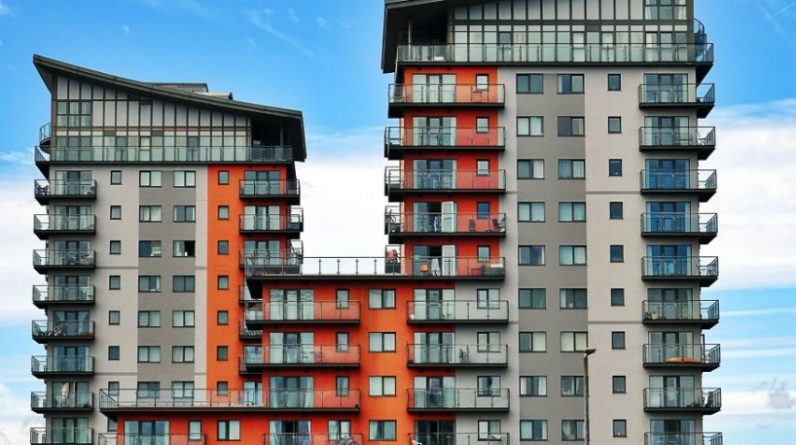
Building
Types of building construction– There are various ways for the classification and categorization of construction building projects. Usually, owners, materials, or structure patterns are the factors to consider for the classification of multiple projects.
The following are the most common 5 types of building construction that are typically considered.
Type I is known as fire-resistive construction
This classification pertains to any structure that exceeds a height of 75 feet. It encompasses high-rise residential and commercial establishments like apartment buildings, offices, and hotels. These towers are engineered to endure high temperatures over time without collapsing. Additionally, all the construction materials employed in these buildings are non-combustible. The walls, floors, and roofs are reinforced concrete and protected steel. While these characteristics contribute to their exceptional durability, they also increase construction expenses.
- Non-combustible materials such as concrete and steel are used for walls, floors, and roofs in this type of building.
- Designed to withstand high temperatures and resist fire for an extended period.
- It offers maximum fire protection but tends to be more expensive.
Specific Type 1 buildings feature HVAC systems and self-pressurizing stairwells to impede the spread of fires. These architectural components facilitate easier access for firefighters and enhance their ability to extinguish fires. When entering a Type 1 building, the primary objective is securing stairwells to ensure a safe evacuation.
Type II is known as non-combustible
Type 2 buildings, similar to Type 1 structures, are constructed with fireproof walls, partitions, columns, floors, and roofs. However, unlike Type 1 buildings, Type 2 buildings usually lack fire-resistive coatings and are more susceptible to collapse. They often feature metal floors and ceilings, complemented by masonry or tilt-slab walls.
- Non-combustible materials are utilized for walls, partitions, floors, and roofs.
- They may lack fire-resistive coatings, making them more prone to collapse during a fire.
- Commonly found in schools, shopping malls, and renovated commercial structures.
Newer school buildings, shopping malls, and recently renovated commercial structures commonly fall within the Type 2 construction category. In the event of firefighters responding to a Type 2 building, their primary objective will be to ventilate the premises to prevent a hazardous increase in temperature.
Type III Construction: Ordinary
Type III buildings, called brick-and-joist structures, feature either tilt-slap or reinforced masonry walls composed of non-combustible materials. However, it’s important to note that some interior structural elements, such as frames, floors, and ceilings, may be constructed with wood or other combustible materials. This type of construction can be found in both older and newer buildings. Older structures often have conventionally framed roofs, whereas newer ones typically incorporate lightweight roof systems.
- Exterior walls are made of non-combustible materials like masonry or tilt slab.
- Interior structural elements like frames and floors may contain wood or combustible materials.
- Ventilation is possible, but fire extension can occur through connected attics or void spaces.
Schools, buildings, and houses can all fall into the Type III construction category. One advantage of this construction type is that it allows for ventilation. However, many Type III buildings have interconnected attics or horizontal void spaces, increasing the likelihood of fire spread.
Type IV Construction: Heavy Timber
Type IV buildings are primarily constructed using large pieces of lumber connected using metal plates and bolts. This construction method was commonly used before 1960, making heavy timber construction easily recognizable. Old churches, factories, and barns are often classified as Type IV buildings.
For this building type, all wooden members must meet specific dimensional requirements. Structural wood supports such as columns, beams, and girders must be 8 inches thick, while heavy planks used for roofs and floors must be 6 inches thick. Type IV buildings have non-combustible exterior walls and interior elements.
- Large pieces of lumber connected with metal plates and bolts are used.
- Wooden structural members meet specific dimensional requirements.
- It provides good fire resistance and structural mass, but substantial water is required to extinguish fires.
Despite containing combustible materials, these buildings generally withstand fire exposure quite well. Their structural mass also provides increased resilience against collapse. However, firefighters will require substantial water to extinguish a fire in this building. It’s important to note that the metal joint connections in Type IV buildings can contribute to a rapid escalation in fire severity.
Type V Construction: Wood-Frame
Type V buildings represent the most combustible construction type in this classification. Unlike other categories, Type V construction permits the use of combustible exterior walls and explosive structural members within the building. Frames, walls, floors, and roofs are either entirely or partially constructed with wood. These building components are cost-effective, leading to their increasing prevalence in the construction of single-family homes and garages.
- The exterior walls and interior structural members are made of wood.
- Most combustible construction type, common in single-family homes and garages.
- Susceptible to rapid fire spread, requiring caution from firefighters.
These wooden structural elements pose significant concerns for firefighters, as they offer no fire resistance when exposed. The building is highly susceptible to ignition and rapid spread in a fire. While these buildings may generally exhibit some resistance to collapse, this is not the case for lightweight constructions, as they can succumb to collapse within minutes of a fire breaking out.

Hi, I am John Smit a Captain in Fire Department City of Newyork with over years of experience in the field of Firefighting and HSE. My passion for fire safety started when I was a young boy and witnessed a neighbor’s house go up in flames along with precious lives. Since then, I had dedicated my life to ensuring the safety of buildings, properties, and individuals in case of a fire and medical emergencies.

